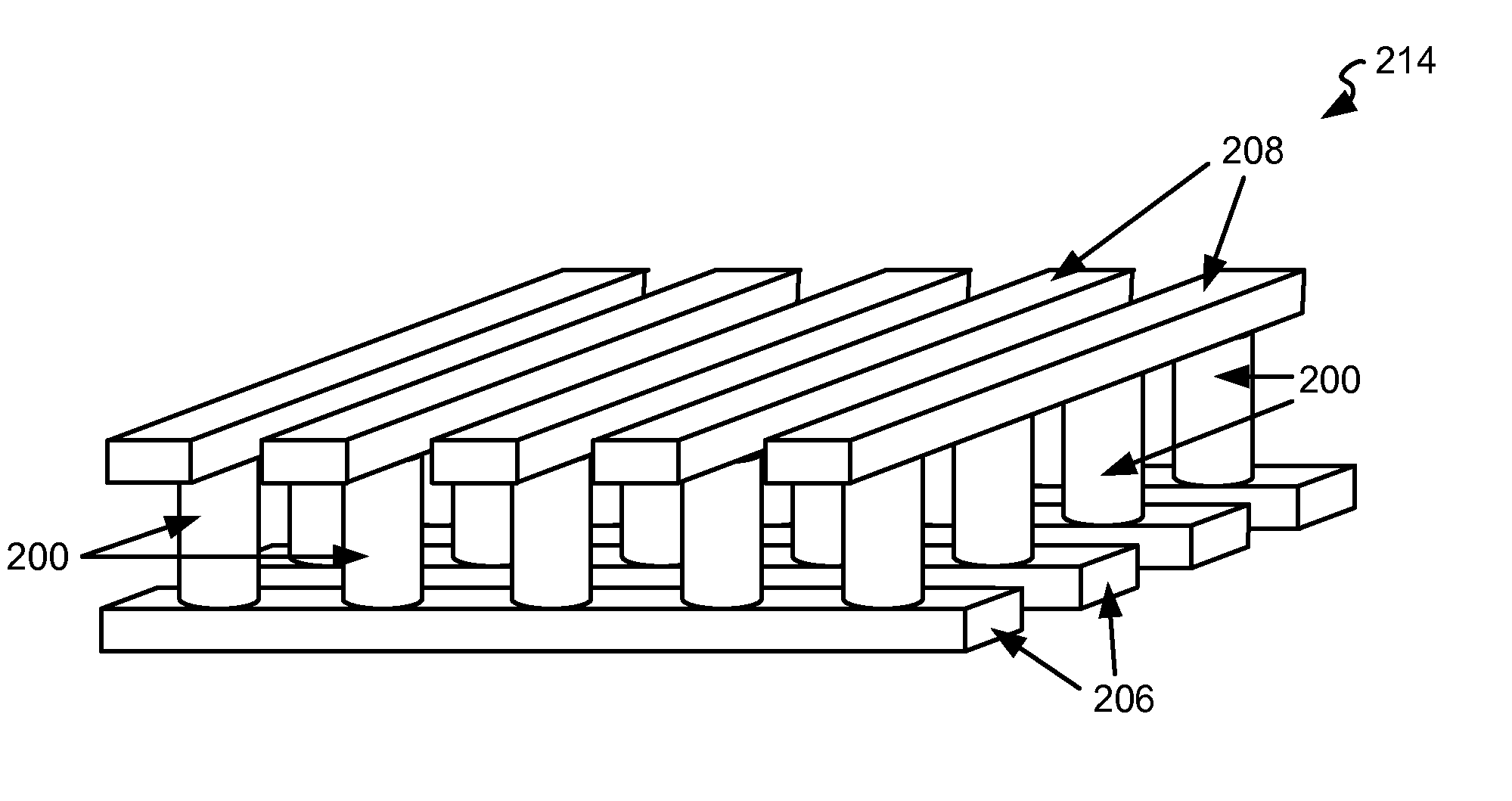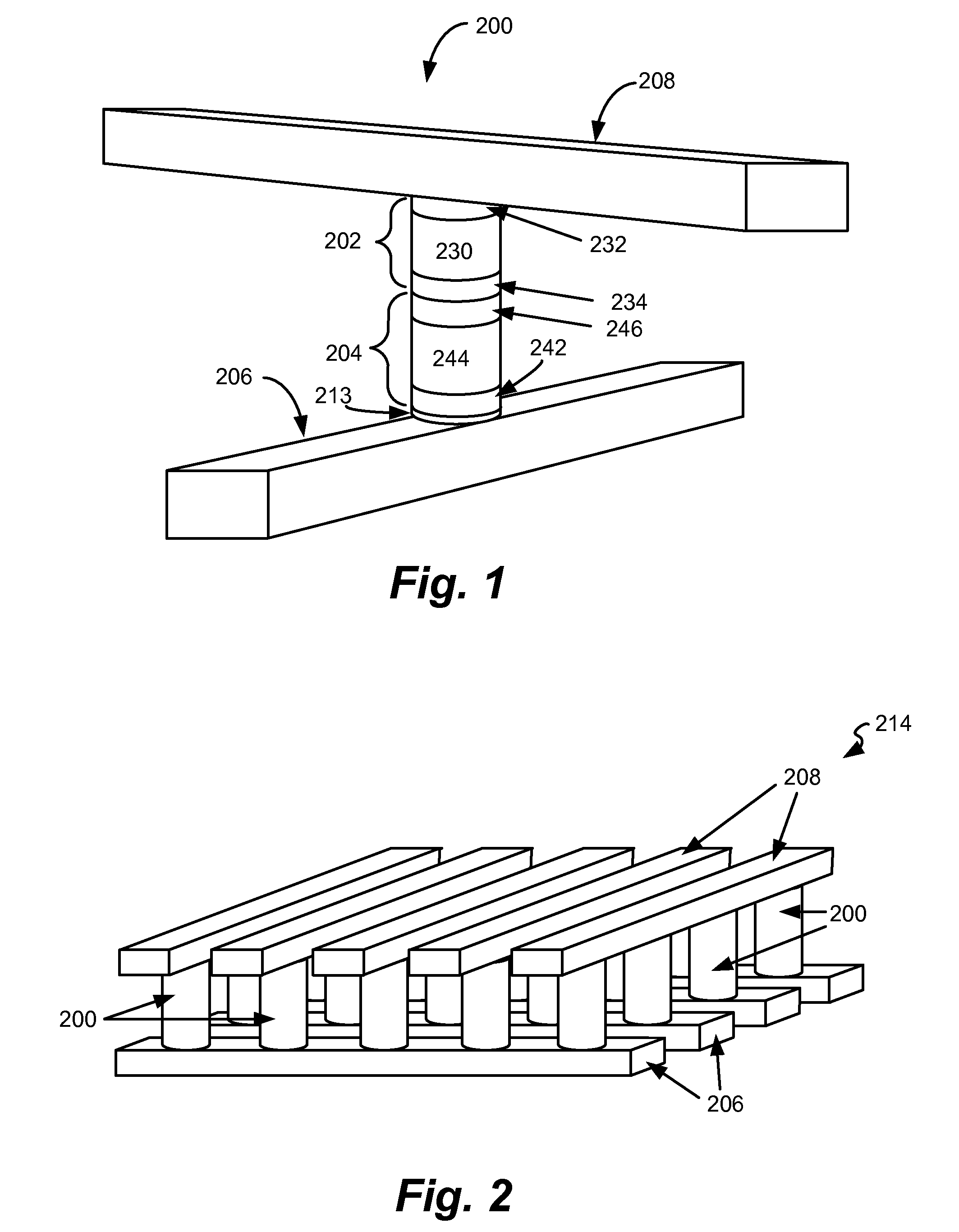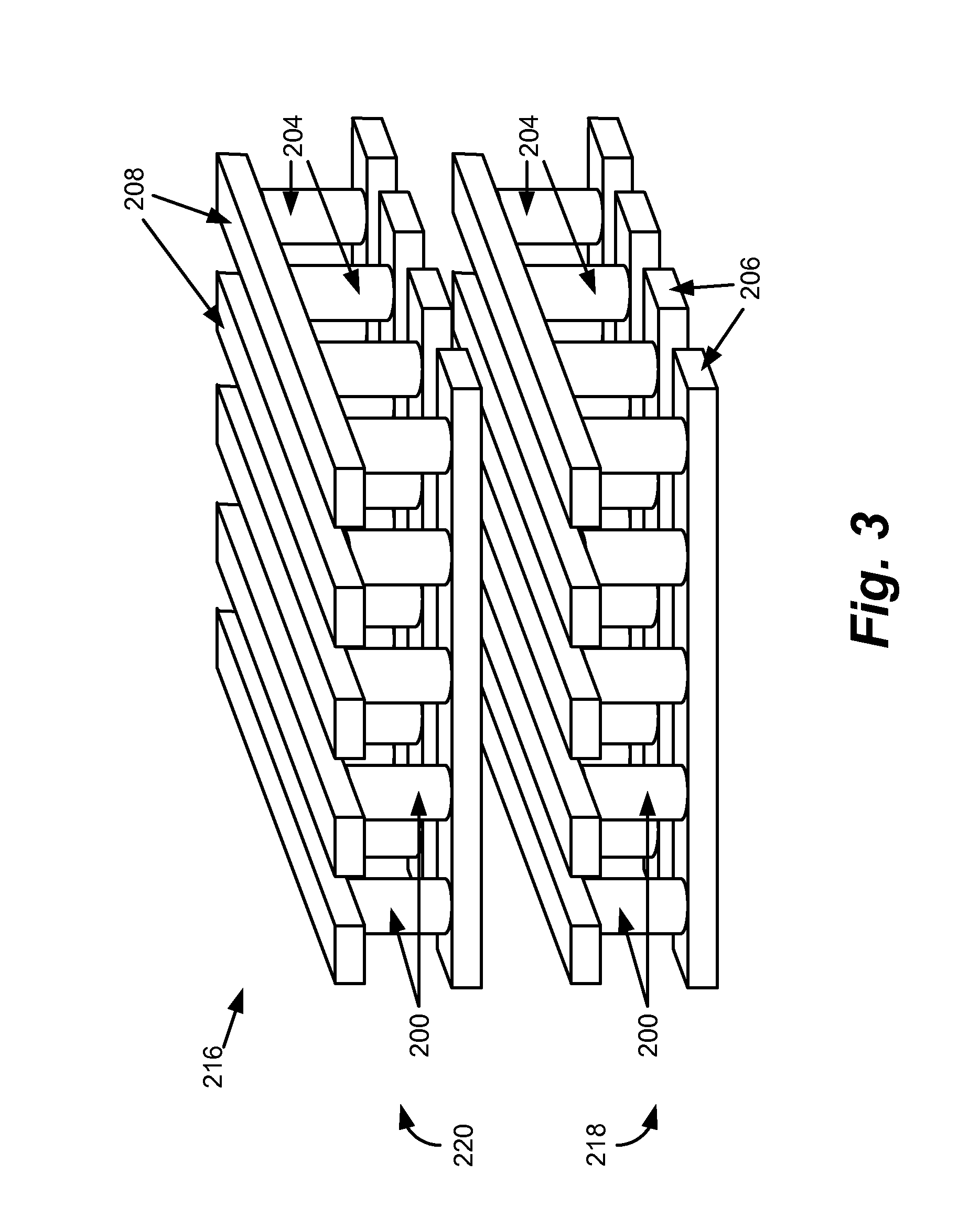Programming reversible resistance switching elements
a technology of resistance switching element and programming method, which is applied in the field of data storage technology, can solve the problems of difficult programming of memory cells, difficult operation of memory devices that employ reversible resistance switching materials, and difficulty in efficiently programming all memory cells using the same programming conditions, etc., and achieves the effect of reducing worst case current and/or power consumption, saving time and/or power, and high programming bandwidth
- Summary
- Abstract
- Description
- Claims
- Application Information
AI Technical Summary
Benefits of technology
Problems solved by technology
Method used
Image
Examples
Embodiment Construction
[0029]A memory system is provided that includes memory cells that have a reversible resistivity-switching element. Various systems and methods are disclosed for varying the programming conditions to account for different resistances that reversible resistivity-switching elements have. For example, the resistance of the reversible resistivity-switching element in the memory cell being programmed may be used to determine a suitable programming voltage in order to reduce the number of times that programming the memory cell must be attempted before it RESETS (or SETS). Various systems and methods are disclosed herein for achieving a high programming bandwidth while reducing the worst case current and / or power consumption. For example, the power that is consumed by an entire group of memory cells (e.g., block) when programming a selected memory cell within the group may be a function of the location of the selected memory cell within the group. In one embodiment, a page mapping scheme is...
PUM
 Login to View More
Login to View More Abstract
Description
Claims
Application Information
 Login to View More
Login to View More - R&D
- Intellectual Property
- Life Sciences
- Materials
- Tech Scout
- Unparalleled Data Quality
- Higher Quality Content
- 60% Fewer Hallucinations
Browse by: Latest US Patents, China's latest patents, Technical Efficacy Thesaurus, Application Domain, Technology Topic, Popular Technical Reports.
© 2025 PatSnap. All rights reserved.Legal|Privacy policy|Modern Slavery Act Transparency Statement|Sitemap|About US| Contact US: help@patsnap.com



